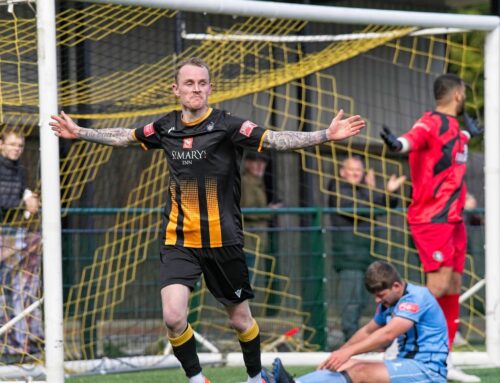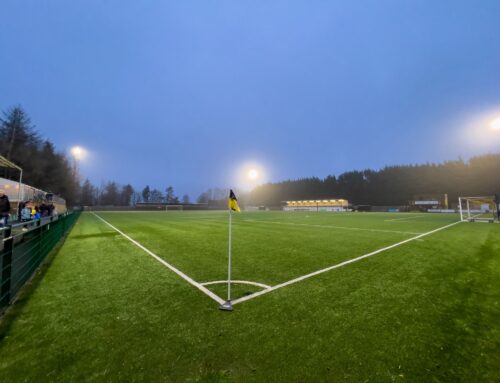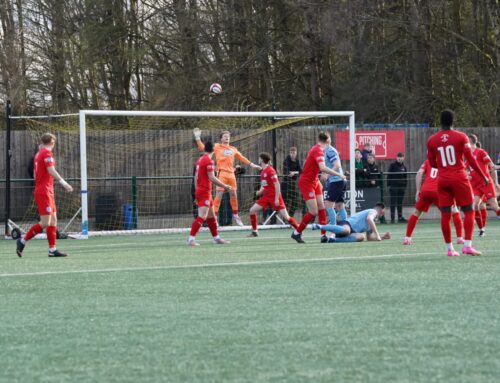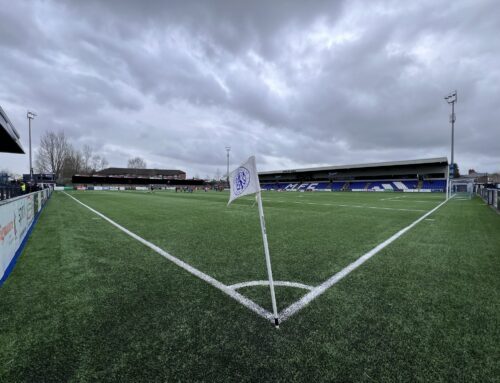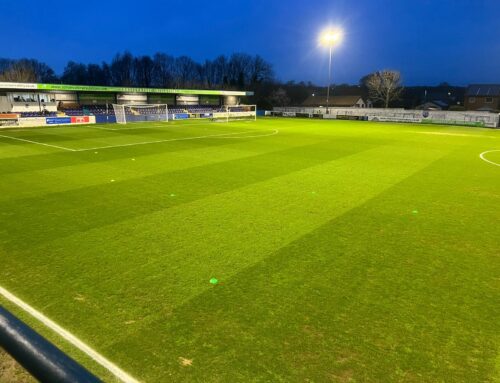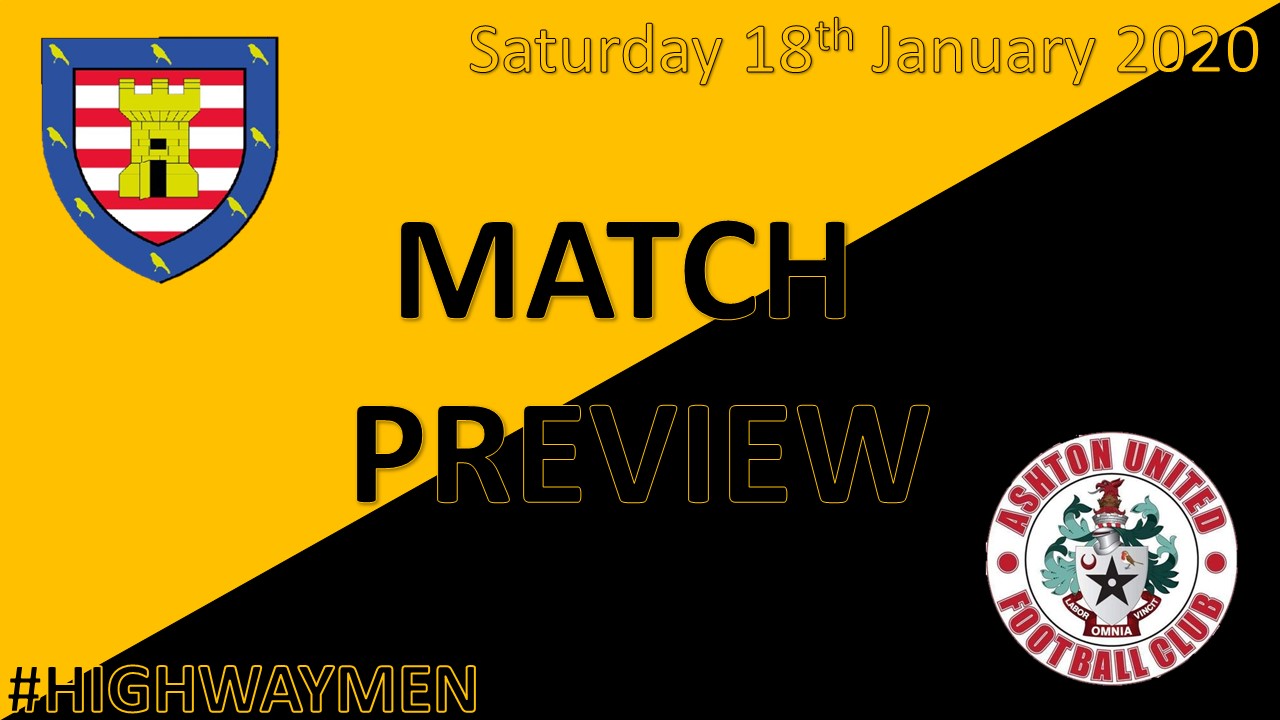
Match Preview proudly sponsored by Northumbria Print
Date: Saturday 18th January
Venue: Craik Park, Morpeth Common, Morpeth, Northumberland, NE61 2YX
Kick Off: 3pm
Competition: Northern Premier League Premier Division
Highlights: Highwaymen TV
History
Ashton United Football Club was formed in 1878 under its previous name of Hurst FC. The Hurst area boasted several teams of a good standard and the club’s first recorded game came in early 1879 against another local club, Hurst Red Star. Records indicate that the current Hurst Cross ground was first used by the club in 1880, making it one of football’s oldest surviving venues.
The club proved a very progressive outfit in their early days, entering the FA Cup as early as 1883 (just the 13th season of the competition) and reaching the second round at the first time of asking, a club best equalled but never bettered since. In 1885 the club landed its first silverware after the Manchester FA started a new competition for member clubs called the Manchester Senior Cup – Hurst won the first ever final against Newton Heath, the forerunners of the present-day Manchester United, taking the trophy after a 3-0 victory. 1885 also saw a ground attendance record set at Hurst Cross, with over 9,000 people paying to watch FA Cup holders Blackburn Rovers play a Lancashire Cup tie.
The club joined the Ashton and District League as the 19th century drew towards a close, but playing standards were declining and the club failed to gain membership of the Manchester League when it was founded in 1892. Hurst were in the wilderness until finally joining the Manchester League some seventeen years later, when a new lease of life was provided by wealthy mill owner, Alderman Kenworthy; James Ingham, captain and goalscorer in the 1885 Manchester Cup triumph was now a committee member and the capable Jim Ferris was appointed club secretary (in the days before managers) – a post he held until the mid-1920s.
Club colours in those early days were black and white stripes and the ‘The Lambs’ – as they were nicknamed – became an instant success on the field – finishing joint-top in their first campaign and only losing the league title after an end-of-season play-off. The club’s first honours of the 20th Century came in 1911 when the Manchester Junior Cup was won; that trophy was retained in 1912 to make a league and cup double as Hurst won the Manchester League title in what was to be their final season in the competition; the club subsequently joined the 2nd Division of the Lancashire Combination in 1912 and won promotion to the top tier at the first attempt. In 1915 the club finished runners-up in the 1st Division before standing down from competitive action; the club briefly resumed playing in 1916-17 and won the Lancashire Combination, title before standing down again until World War I ended.
Like many others, the club struggled in the immediate post-war era. The change of name came about in 1946 but a change in fortunes did not follow. In 1948 the club failed to win re-election to the Cheshire League and re-joined the Lancashire Combination. Ashton’s first honours after World War II again came in the form of the Manchester Challenge Cup, won in 1950 and then held for three seasons from 1953 to 1955. Cup form in general was good in the 1950’s as the club twice reached the first round proper of the FA Cup; losing a replay at Hurst Cross to Halifax Town in 1953 and again in 1956 when the Robins were defeated at Southport.
Floodlights were installed at Hurst Cross in 1953 and inaugurated with a 4–3 win over Wigan Athletic on 29 September of that year; club record scorer Stuart Dimond – 201 strikes in just 251 games – appropriately notched the club’s first goal under lights. During the 1954–55 season Hurst Cross staged the first FA approved floodlit competition – called the Lancashire and Cheshire Floodlit Cup. Ashton United invited seven other clubs from a mixture of the Lancashire Combination and the Cheshire County League to compete for the trophy, with all games being played at Hurst Cross. The competition ran for two seasons, with Hyde United the winners on both occasions.
The 1960s started with Ashton as holders of the Manchester Intermediate Cup and later that year (under the managership of his father) the club saw the debut of its youngest ever player – and scorer – a 15-year old schoolboy called Alan Ball, later a World Cup winner in 1966. In 1961 Ashton were demoted from the 1st Division of the Combination despite finishing 12th – they had originally resigned their membership in the hope of re-joining the Cheshire League but were beaten in a vote by old foes Wigan Athletic.
Ashton came back with a vengeance by storming to the 2nd Division title in 1962 – winning every home league game that season – and also taking the League Cup for good measure under the managership of former Scottish international Hugh Kelly. 1963 saw the club win the Intermediate Cup once more, a feat repeated in 1966. The club remained in the top flight of the Combination until 1964 until, continually frustrated in their attempts to re-join the Cheshire League, they embarked on a two year experiment of playing in the Midland League. During the 1964-65 season, Stuart Dimond – by now manager – was pressed into emergency action after an injury crisis and subsequently became the club’s oldest player and goalscorer, just short of his 44th birthday. Midlands League football proved a financial disaster and the club re-joined the Lancashire Combination (2nd division) in 1966; two seasons later they finally got their much sought after move back to the Cheshire League, where they stayed until the North West Counties League was formed in 1982. The intervening years had seen the club twice win the Manchester Senior Cup, whilst their first season in the NWCL saw Ashton land their second Manchester Premier Cup in three years.
Ashton finally won promotion to the Premier Division via the inaugural NPL play-offs under Gerry Quinn’s stewardship in 2002 and also retained the Manchester Premier Cup they had won the previous season – they were to win it again in 2003 and were beaten finalists in 2004, the same year the club became founder members of the new Conference North. Their stay in the new league was ended after just one season – only the club’s third relegation in over one hundred years of football.
Last Match
The Highwaymen returned from Buxton with a hard-fought 3 points. Diego De Girolamo had fired the Bucks into a two goal lead with a quickfire brace but Jack Foalle halved the deficit before the interval. He then scored a spectacular second 5 minutes into the second half before completing his hat trick on 80 minutes.
Ashton United were in action on Saturday and defeated basement boys Stafford Rangers 2-1 at Hurst Cross. Josh Green opened the scoring for Stafford in the first half before the home side levelled through Josh Wilson. The winner came on 86 minutes when Michael Brewster touched the ball home.
Manager
Michael Clegg: Appointed manager of Ashton in December following the departure of Jody Banim. Clegg was previously in charge at Atherton Collieries and has came up against the Highwaymen twice already this season.



